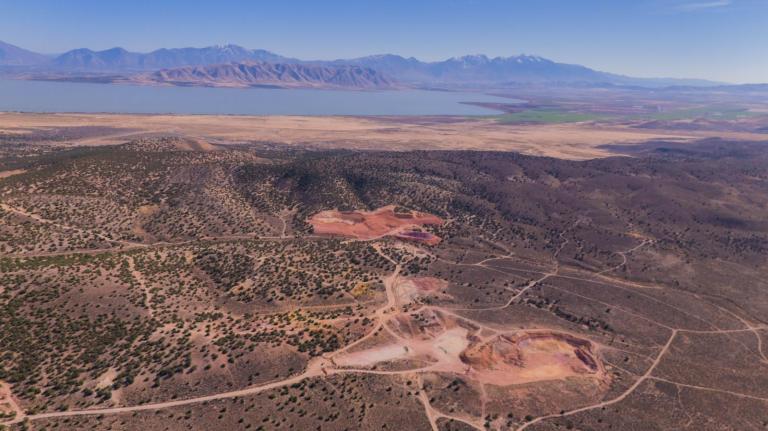“Given the urgency and magnitude of the escalating pace of climate change, the only hope lies in a rapid and unprecedented mobilization of humanity around this issue … that some spark might ignite a massive uprising of popular will around a unifying movement for social survival and the promise it holds for a more prosperous, more equitable, and more peaceful world.” — Ross Gelbspan, Boiling Point
Last weekend, hundreds of thousands of people marched in Washington, D.C., and around the country to protest the war in Iraq. On Saturday in D.C., widespread feelings of outrage and determination were palpable. Over the following two days, activists lobbied on Capitol Hill and engaged in nonviolent civil disobedience at the White House. It was a powerful combination of events. It was also a powerful example of exactly what we need to fight global warming: a massive, multipronged social and political movement.
Such a movement is growing as you read this, and will hit the streets in December — not a moment too soon. There is no cause, no issue, no crisis more significant and more immediate than global warming. We could well see, within our lifetimes, a vast disruption of human society — above and beyond the widespread injustice and poverty that already exist — via floods and storms, rising sea levels, large-scale refugee movements, droughts, deforestation, and a major decline in food production. This possibility was brought home to many people in the U.S. by the devastating effects of the recent hurricanes.
While clean energy, conservation, and efficiency provide a clear solution to our global problem, little action has been taken in the U.S. beyond the individual, local, and occasionally state levels. The hard truth of the matter is this: the battle to stabilize our climate will not be won solely on the basis of rational arguments, individual lifestyle changes, and relatively modest clean-energy efforts. Given the alarming increase in the pace of global warming and the resistance to change by big coal and big oil, we need a movement the likes of which this country and world have never seen.
We need an early 21st century mobilization for global survival that is visible, multifaceted, creative, and determined. We need a fresh, young, energetic campaign. We must be willing to use nonviolent civil disobedience in a strategic way to underline the urgency of this crisis. We need individuals who are willing to make personal sacrifices. If we truly believe the clock is ticking toward a moment when the floodgates will almost literally open, we need people who are prepared for the hard, thankless work it takes to organize and build a movement, and for the dramatic actions of demonstrating, fasting, sitting-in, and risking arrest or going to jail.
This Dec. 3, a coalition of groups representing students, environmentalists, workers, women, people of color, religious adherents, and others will heed that call during a Day of Action. The day falls in the middle of a major U.N. conference in Montreal of countries that have ratified the Kyoto Protocol — as well as some, including the U.S., that have not. There will be demonstrations at federal buildings, vigils, town meetings, and other creative actions, including a major one in Montreal organized by a Canadian coalition.
If all goes well, Dec. 3 will be the springboard for a global justice campaign in 2006, including a potential national march on Washington. And we have good reasons to believe such a campaign will have a major impact.
Here’s one: last fall, students on hundreds of college campuses around the country held events and protests on the issue of clean energy. An important national network, Energy Action, which brings together 24 mainly youth and student groups, is continuing to grow. Students are on board.
Understanding within the peace movement about the connections between the war on Iraq and global warming is also growing. The major national anti-war coalition, United for Peace and Justice, supports the call for actions on Dec. 3, and — as it proved in Washington, D.C., last weekend — knows how to rally people to the cause. Activists are on board.
Many localities, and some states, are taking action to reduce greenhouse-gas emissions and replace dirty energy with clean alternatives. Just recently, the U.S. Conference of Mayors went on record in support of these efforts. Towns and cities are on board.
Leaders among the currently influential Christian right are speaking out. Rev. Rich Cizik, vice president for governmental affairs for the 30-million-member National Association of Evangelicals, tells his flock, “I don’t think God is going to ask us how he created the earth, but he will ask us what we did with what he created.” The faithful are on board.
The global-warming crisis has reached such magnitude that even within the leadership of the Republican Party, people are speaking out about the need to address it, including Sens. John McCain (Ariz.), Chuck Hagel (Neb.), Lincoln Chafee (R.I.), and Olympia Snowe (Maine). Political leaders are on board.
Finally, and very significantly: people in the U.S. are getting it. This summer, poll results from the University of Maryland revealed that an overwhelming majority of respondents, 94 percent, thought the U.S. ought to match, or exceed, the rest of the world’s limits on greenhouse-gas emissions. Three out of four people saw global warming as a problem requiring action. The people are on board.
All of this has happened without a visible movement taking to the streets. Is it unrealistic to believe that with such a movement in place, seemingly impossible things would become possible?
We must act as if we have it in our power to bring into being a new world — a desirable world, a world grounded upon justice, where we are at peace with one another and the earth that gives us life. Because we do.
Are you on board?


